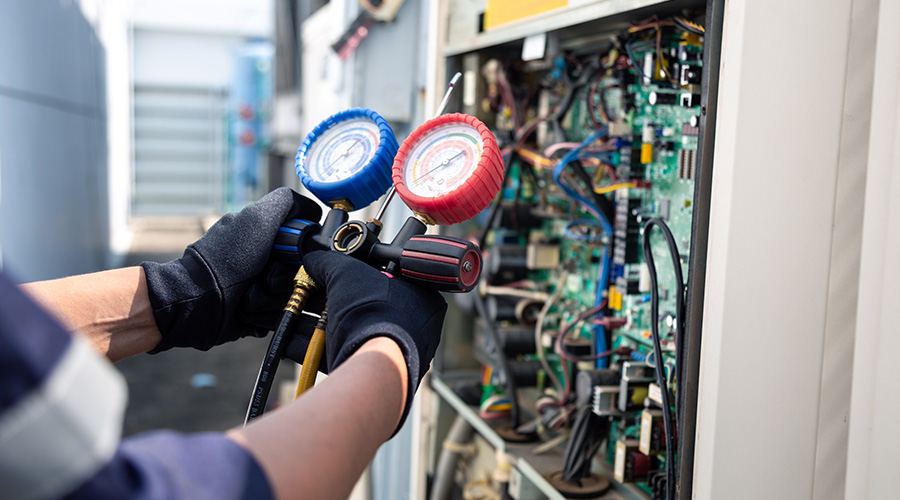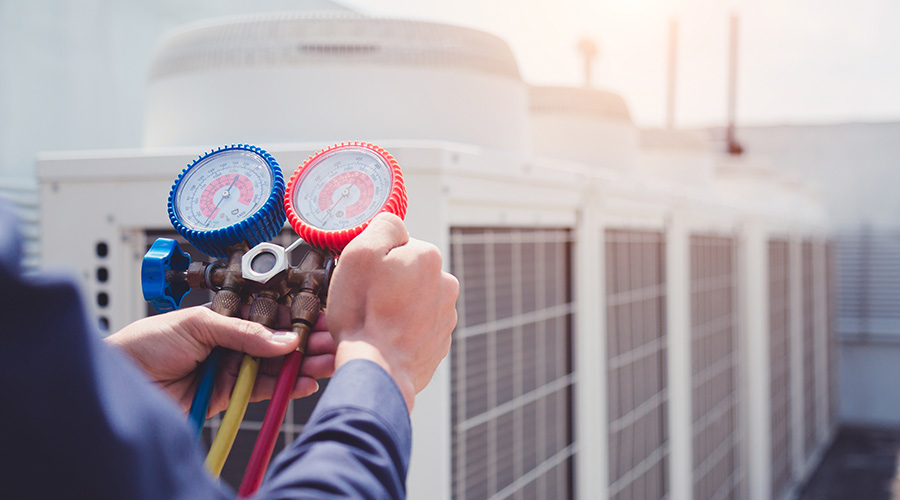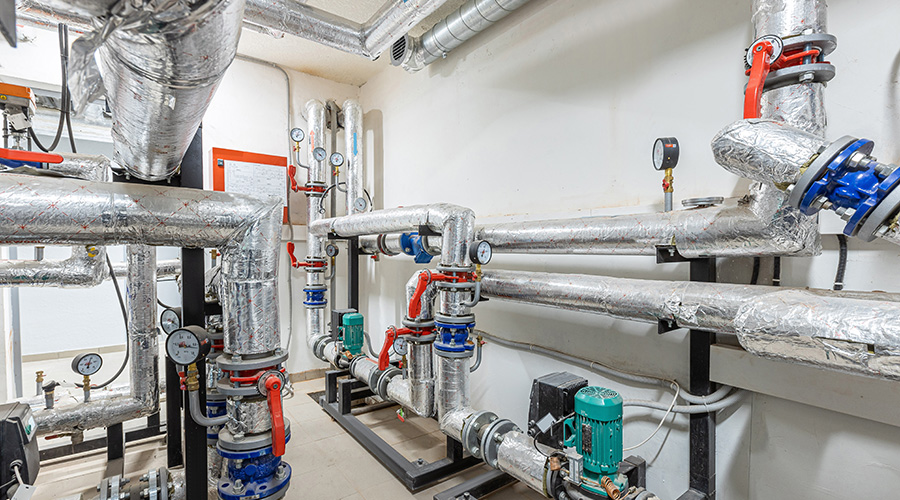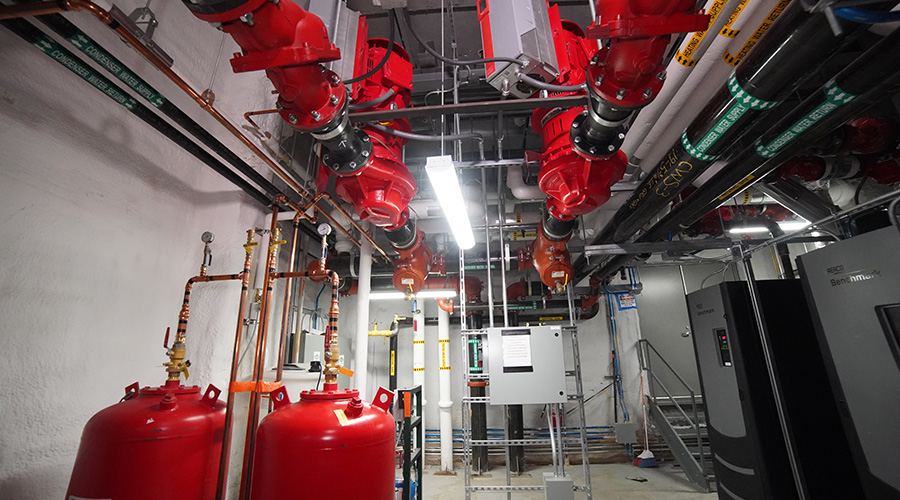New-Generation Equipment: Making the Grade?
Schools weigh both opportunities and challenges created by system advances
In conjunction with the Air-Conditioning and Refrigeration Institute (ARI)
A building boom has hit the nation's education facilities. Triggered by a jump in enrollment, many facilities find themselves in the midst of a wave of new construction, expansion and renovation projects. For maintenance and engineering managers who must oversee the maintenance and day-to-day operation of these facilities, this increased level of activity can be both good news and bad news.
The good news is that they have an opportunity to rid themselves of outdated, troublesome HVAC systems and equipment.
The bad news is that new systems, whether in new or renovated buildings, are more complex than the systems that the technicians have worked with in the past. And since expanding enrollment and additional facilities rarely guarantee higher staffing levels and maintenance budgets, managers find themselves in increasingly challenging times.
The key to successfully facing this challenge is understanding changes on the way in the form of new HVAC systems in new and renovated facilities and properly preparing for their arrival. Although most HVAC systems and their components will be impacted by the new or renovated facilities, many of the major changes will come in a few systems, including chillers, air filtration systems, air handling systems, and humidification systems.
Chiller Advances
Of the different types of HVAC-system components that play an essential role in facilities, few have undergone as radical and rapid a change as chillers. New-generation chillers are far more efficient than those of even 10 years ago. New chiller control systems are fully digital. Chillers are coming equipped with variable frequency drives to improve part-load performance.
Control systems on new-generation chillers have built-in monitoring and diagnostic equipment to enable maintenance personnel to keep the chiller operating reliably and at peak performance.
Equally important, the use of new technology has created options for engineering and maintenance managers when it comes to chiller selection. In the past, electric chillers ruled. They were reliable and relatively simple to operate. Their energy operating costs were below those of other, non-electric chillers.
But changes in electricity pricing structures led to the rise of alternative-fuel chillers. Electricity deregulation and real-time pricing have made alternative-fuel chillers more economical to operate in many applications. Absorption units and turbine or natural-gas-drive centrifugal chillers now are more widely used in order to help facilities control electricity costs.
These advances means engineering and maintenance managers and front-line technicians must learn new skills. Variable-frequency drives, microprocessor-based control systems, building automation system interfaces, and alternative-fuel chillers all require new maintenance skills that must be developed in order to operate and maintain them properly and cost-effectively.
While the principles of operation of the chillers will stay the same, the skills required to diagnose problems are changing.
Air-filtration Systems
Indoor air quality (IAQ) demands have changed the way air is filtered in HVAC systems. Not that long ago, the primary purpose of the filtration system was to protect the HVAC system coils from dirt. As such, filter efficiencies in the range of 30 percent were considered to be the norm. Only in specialized applications were higher-efficiency filters applied.
Today, the situation has changed dramatically. Now, the primary purpose of air-filtration systems is to protect the building occupants or processes. Increased concerns over IAQ have resulted in the use of filtration systems with significantly higher efficiencies, typically in the 60-90 percent range. The old standard filters of 30 percent efficiency are now relegated to the role of prefilters, installed to extend the life of the higher-efficiency, more costly filters.
Advances in filtration systems are not the only changes, however. Today, it is more common to find gas-phase filters in institutional and commercial facilities. Once limited to industrial applications, these filters are applied in areas where building occupants might be exposed to exhaust fumes, paint vapors or other gaseous contaminants.
Successful use of high-efficiency and gas-phase filters requires that managers and staff have a sound knowledge of the building and the airborne contaminants that are likely to be present. Operation and maintenance requirements differ from those for standard panel or cartridge filters.
Allowing a high-efficiency filter to become overloaded with dirt decreases airflow in the system and can result in structural damage to the filter rack. Failing to replace or recharge gas-phase filters will negate their effectiveness, exposing building occupants to the contaminants that the filters were designed to remove from the air supply in the first place.
If the new filter systems are to be used successfully, managers must ensure that front-line technicians properly monitor all filter systems. Static-pressure alarms that sense the load across filters is only one step that must be taken. Technicians also must inspect all filter assemblies regularly. A failed or misaligned section of the filter media can allow air to bypass the filter assembly, while not triggering the static pressure alarm.
Air-handling Systems
While the design and operation of building air-handling systems has not changed much over the past 10 years, the systems used to control their operation have advanced. Today, most systems are microprocessor based.
The level of control sophistication has increased exponentially. Operators now can program systems to perform very complex operation that provide a specialized level of control, minimize system energy use or accomplish both.
As result of these advances, technicians must understand how to test, inspect and maintain both electronic and mechanical components. If systems are to operate effectively, they must be carefully set up and properly maintained.
While the use of microprocessor-based controls gives technicians access to a much wider range of information and diagnostic tools than previously available, they also make it essential to avoid traditional shortcuts.
No longer can temperature-control technicians simply bypass or hard-wire a particular device just to get it operating. Too many interconnections exist between elements in the system. Fixing a system requires that technicians first correctly diagnose the problem, then take the necessary steps to properly fix it.
Humidification Systems
Traditionally, building HVAC systems have been concerned only with temperature control. Building humidity levels were allowed to fluctuate in response to outside conditions and to the amount of moisture generated within the building. As a result, it was not uncommon to find that indoor relative humidity regularly fell as low as 10-15 percent.
While limiting the amount of outdoor air brought into a facility will help improve relative humidity levels — particularly when outdoor air temperatures are low — it also can negatively impact IAQ. So, humidification systems are the most suitable solution for indoor environments with low relative humidity.
While the technology involved in humidification systems might not have changed dramatically, the more widespread use of humidification has created heightened scrutiny of system performance. Once limited to specialized applications, such as healthcare facilities and clean rooms, humidification systems now are widely used in all types of facilities.
For managers, this often means a new type of system to operate and maintain. Humidification systems can go a long way toward improving conditions within facilities if they are operated and maintained properly. But if neglected, they can create a whole new host of problems, including creating an environment that is ideal for the growth of microorganisms.
Meeting the Challenge
Because the new technology streaming into the nation's educational buildings can enable engineering and maintenance managers to create indoor environments that better support the needs of facility occupants, managers cannot treat them lightly.
Departments that operate and maintain these systems must change fundamentally. Old habits must be broken. No longer is "just good enough" good enough. Quick and dirty techniques that were widely used on older systems simply will not work with new technology.
To keep the systems operating as intended at peak efficiencies in many cases also will require a change in institutional attitude. The change is best brought about by ensuring that technicians responsible for operating and maintaining the systems receive proper training, as well as the proper tools and technology to perform their work.
Preparation for new installations must begin when schools are still in the planning process. Engineering and maintenance personnel must be part of the decision-making process related to the types of systems to be installed.
Not only can they contribute decisions on which systems to install, but also where and how the systems are installed. Many long-term maintenance problems result directly from systems that simply are inaccessible for maintenance.
In times of tight budgets and understaffing in educational facilities of all types, meeting this challenge will not be easy. But considering the investment made in advanced HVAC systems, the additional cost of training is small in comparison. And the rate of return provided by having a properly trained staff will more than offset the cost.
James Piper is a national consultant based in Bowie, Md., with more than 25 years of experience in facilities management and maintenance issues.
SPOTLIGHT: ARI
The Air-Conditioning and Refrigeration Institute (ARI) is the national trade association representing manufacturers of more than 90 percent of central air-conditioning and commercial refrigeration equipment produced in North America.
ARI is a major voice for the air-conditioning and refrigeration industry. Its members have a forum to solve common problems and enjoy a variety of services and benefits. ARI’s activities include:
- establishing product performance rating standards
- administering voluntary performance certification programs for industry products and publishing certified rating data at ARI PrimeNet
- providing representation and technical assistance to federal, state and local government entities in legislative and regulatory matters
- assisting the industry in international trade activities, including international standards development
- communicating information on industry issues to ARI members, government officials, the news media and the public
- improving the education and training of technicians.
ARI, 4100 N. Fairfax Drive, Suite 200, Arlington, VA 22203. (703) 524-8800. fax: (703) 528-3816.
|
Related Topics:











